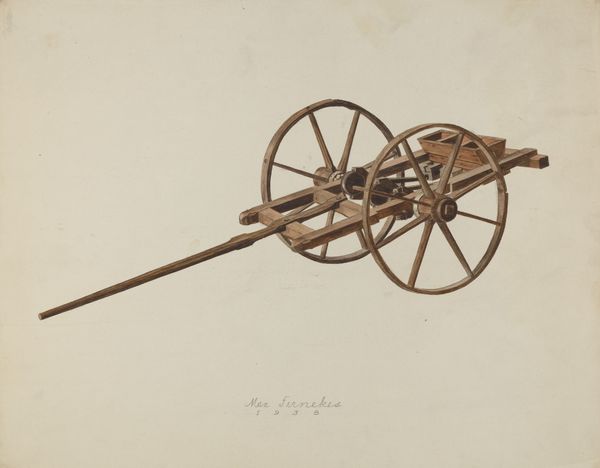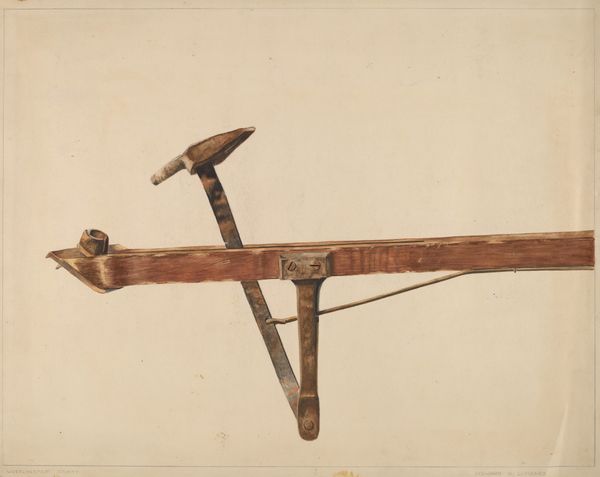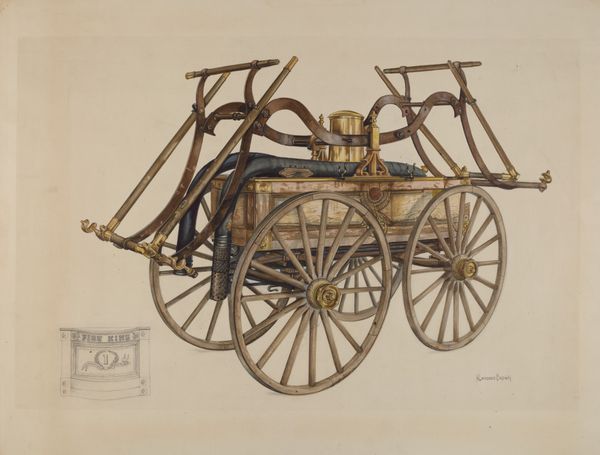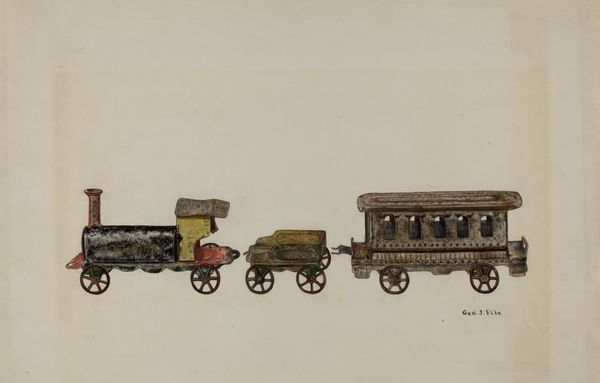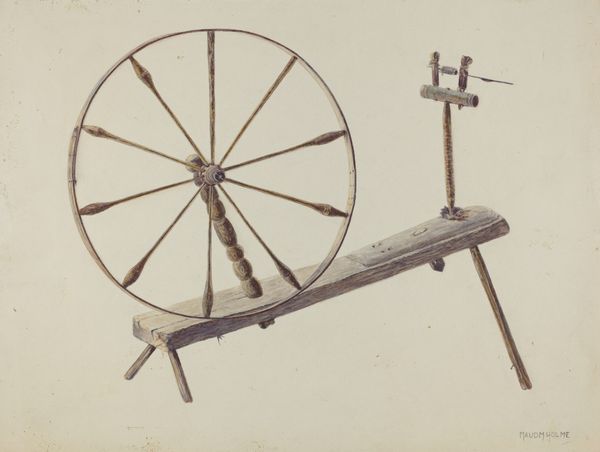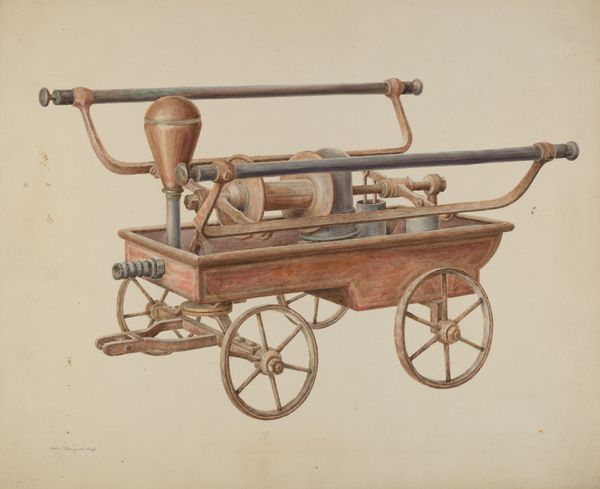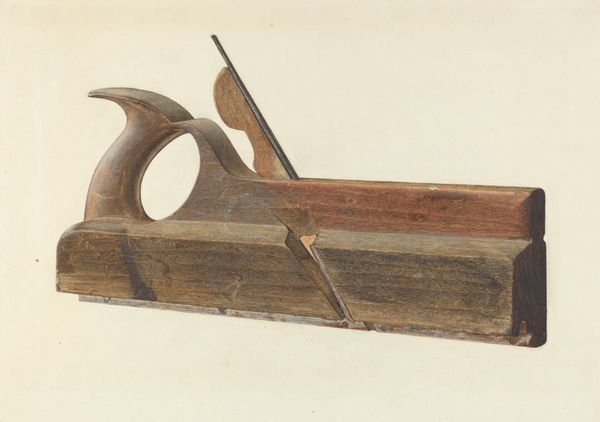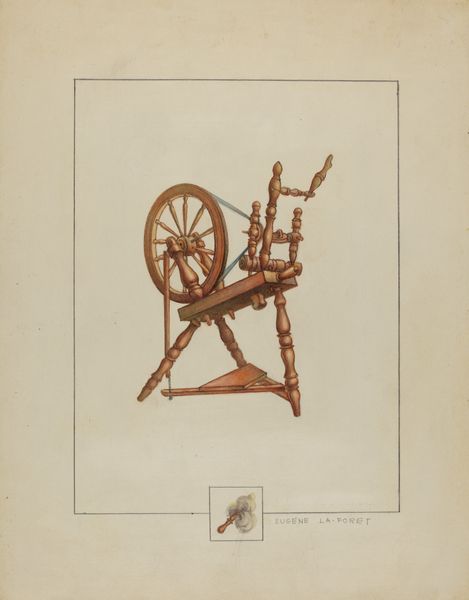
drawing, watercolor
#
drawing
#
watercolor
#
coloured pencil
#
watercolour illustration
#
watercolor
#
realism
Dimensions: overall: 28 x 35.6 cm (11 x 14 in.)
Copyright: National Gallery of Art: CC0 1.0
Curator: Looking at this image, I immediately think of childhood and simplicity. The subdued palette is restful, yet the precision in depicting the wooden structure gives it an almost technical drawing quality. Editor: This watercolor drawing, aptly named "Wooden Cart," was created around 1936 by Tulita Westfall. The almost naive, precise realism prompts interesting questions about representation, gendered labor and how these are negotiated in visual culture of the period. Curator: Yes, that precise realism is what I find compelling. Look at the texture achieved with what appears to be layered washes and perhaps some colored pencil work? The bindings holding the cart together feel particularly well-rendered. I find myself drawn to the cart as an object – a very humble piece of technology and tool for moving materials that also becomes an artifact itself of the social processes that give rise to the means for resource distribution. Editor: It’s a captivating tension isn’t it? The careful rendering seems to elevate this common object. It makes me consider who Westfall was depicting and what her subjects were experiencing at that moment in history, specifically the lives of rural and working-class communities whose realities are often underrepresented in historical records. What was the labor needed to construct something like this, and who performed that work? The ropes, which look like simple joinings, may have been anything but. The choice to paint the wheels this particular reddish-brown color might suggest a specific material, too. Curator: Precisely. The redness could indicate iron oxides within a specific source of clay or wood stain, possibly indicative of regional practice or specific workshop. We might even see within the grain how materials were manipulated. Consider how each piece would have been worked and shaped; each cut, smoothed, or fastened contributes to the larger form, illustrating a hands-on knowledge easily lost when considering ‘finished’ products. And those knots that join the wooden frame, so seemingly delicate. Are they functional or ornamental? How do the aesthetic and the utilitarian meet within the crafting of a simple object, but, painted in such fine detail as we see here? Editor: Thinking about those ties, the labor involved becomes almost visceral, recalling craft traditions and community connections forged over time. As we engage with it today, "Wooden Cart" isn't just an artwork, it's a reminder of shared histories and struggles for survival, echoing themes of social justice relevant still. Curator: It becomes more than an isolated representation, then—it invites questions about material, work, and ultimately, our own relationship to the things around us. Editor: Absolutely, urging us to remember not only what things *are* but what goes into *making* them, in a way that still resounds today.
Comments
No comments
Be the first to comment and join the conversation on the ultimate creative platform.
